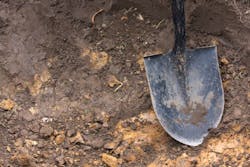The Guys at Square One Feel Good About Construction
The architects, the men and women who get the ball rolling on construction projects, feel good about the outlook for construction in America.
The American Institute of Architects (AIA) issued a news release today to share its opinion that pent-up demand from the pandemic is giving way to a spending surge that will propel construction into 2022.
After nonresidential construction spending declined by about two percent last year, the AIA Consensus Construction Forecast Panel, in its mid-year update, is projecting that spending will decline an additional 3.9 percent this year, which is an improvement from the forecasted 5.7 percent decline reported in January. Nonresidential construction spending is expected to increase 4.6 percent in 2022.
In 2022, virtually all the nonresidential building sectors are expected to see healthy growth, paced by lodging, as well as amusement and recreation.
The strongest design sector performers for the remainder of this year are expected to be health care facilities, up 1.4 percent, while a few other sectors should see only minimal declines, like retail, religious, and education. However, in 2022, virtually all the nonresidential building sectors are expected to see healthy growth, paced by lodging, as well as amusement and recreation, both of which saw steep declines during the pandemic.
“Even while momentum is developing behind most of the nonresidential building sectors, there are several potential potholes on the road to a construction recovery,” said AIA Chief Economist Kermit Baker, Hon. AIA, PhD. “Inflation is back on the radar screen given the surge in consumer spending, as well as the growing federal debt levels. Also, the global supply chain continues to face serious challenges that persist even well after initial pandemic related disruptions have largely subsided.”
